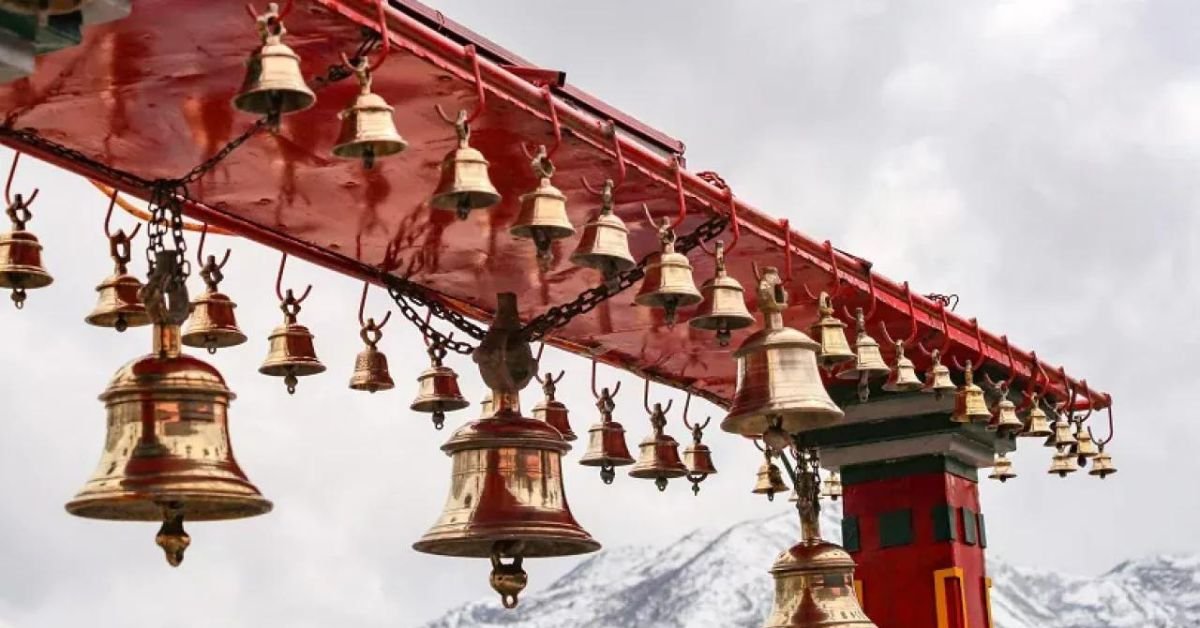Imagine yourself standing at 14,140 feet, surrounded by the majestic Himalayas. Nathula Pass, a jewel nestled in Sikkim’s crown, offers exactly that. This historic mountain pass was once a key artery of the Silk Route, connecting India to Tibet. Here, natural beauty and historical intrigue intertwine, creating a captivating experience.
Whether you’re an adventurer seeking breathtaking scenery or a history buff yearning for a glimpse of Indo-Chinese relations, Nathula Pass has something for everyone. This guide will equip you with all the essentials to plan your visit, ensuring an unforgettable journey to this remarkable frontier.
How to reach:
By Air: Bagdogra Airport, roughly 178 kilometers away, is your best bet for flying in. Regular flights connect this airport to major Indian cities like Delhi, Kolkata, and Guwahati. Once you land, taxis and shared cabs are readily available to whisk you to Gangtok, Sikkim’s capital.
By Train: New Jalpaiguri (NJP) station, about 170 kilometers from Gangtok, is the closest railway option. Thankfully, NJP boasts excellent connections to major Indian cities. Taxis and shared cabs are waiting at the station to take you to Gangtok.
By Road: If you prefer a road trip, Gangtok is well-connected by road to various towns and cities in Sikkim and neighboring states. Siliguri, a major transit hub, offers taxis, shared cabs, and buses operated by the Sikkim Nationalised Transport (SNT) that run regularly to Gangtok.
Best time to visit:
Summer (May to June): Summer paints Nathula Pass in its most vibrant colors. With temperatures ranging from a comfortable 10°C to 20°C, it’s the perfect time to explore. Melting snow reveals a lush landscape, ideal for sightseeing and soaking up the scenic beauty.
Monsoon (July to September): While the monsoon brings life to the region, it’s best to avoid Nathula Pass during this time. Heavy rainfall can trigger landslides and roadblocks, making travel treacherous.
Autumn (October to November): Autumn offers another sweet spot to visit. Crisp, clear weather with temperatures between 5°C and 15°C paints a magical backdrop. The skies are usually free of clouds, allowing for breathtaking panoramic views. This season also boasts smaller crowds compared to summer.
Winter (December to April): Winter transforms Nathula Pass into a wonderland, but be prepared for a challenge. Temperatures plummet below freezing, and heavy snowfall often blankets the area. The pass itself may be closed due to snow accumulation. However, for the adventurous soul who thrives in snowy landscapes, winter offers a unique experience.
The Nathula Pass:
Towering at 14,140 feet, Nathula Pass is a crown jewel among India’s high-altitude passes. This historic gem, perched on the Indo-China border, was once a bustling artery of the Silk Route, fostering trade between India and Tibet. Panoramic vistas of snow-capped peaks and the rugged Himalayan terrain unfold before your eyes. Take a deep breath of the crisp, thin air and stand at this crossroads of history, where a barbed-wire fence serves as a stark reminder of the border.
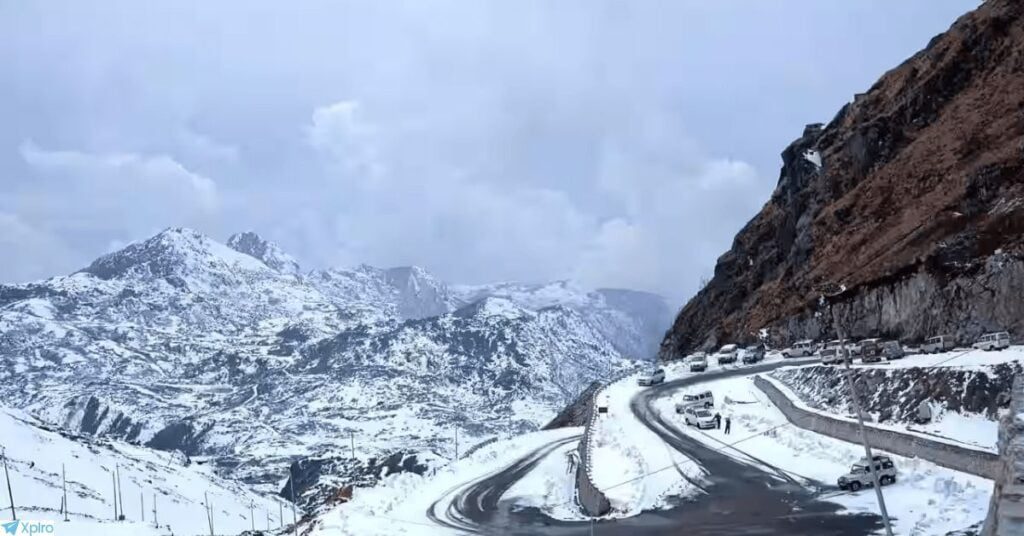
The journey to Nathula Pass is an adventure in itself. Winding roads weave through picturesque landscapes adorned with vibrant alpine flora and pristine lakes. Soldiers from both nations stand guard, a testament to the pass’s strategic significance. On lucky days, you might even witness the ceremonial opening of the gates between the two countries, a powerful symbol of peace and cooperation. Nathula Pass transcends geographical wonder. It’s a poignant reminder of the centuries of historical and cultural exchange that have shaped this region.
Nearby Attractions:
Indo-China Border:
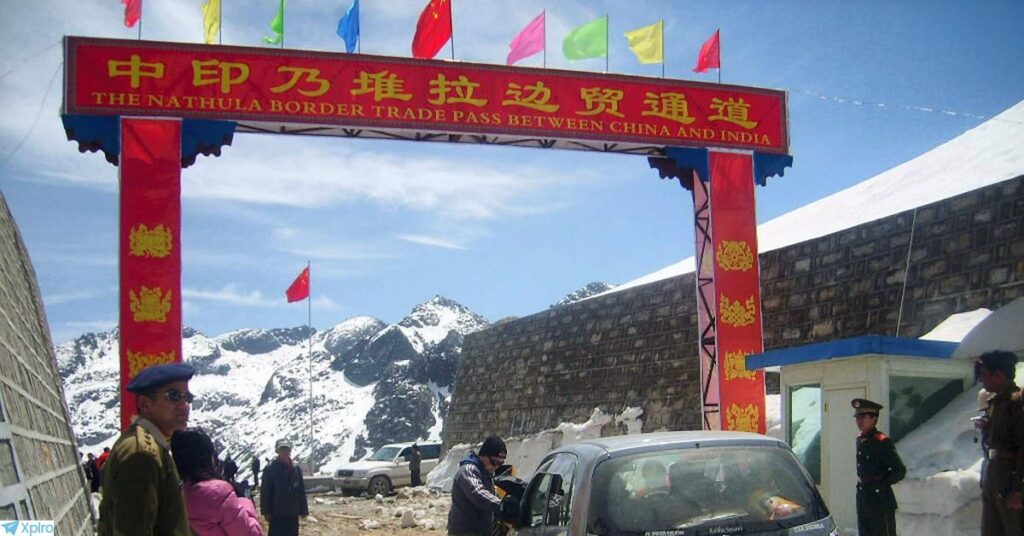
Nathula Pass isn’t just a scenic wonder; it’s a place where history unfolds before your eyes. Standing at this high-altitude border, you’ll witness a fascinating contrast between the two nations. Soldiers from India and China stand guard on their respective sides, a visual reminder of the geographical divide. A barbed-wire fence marks the border, and the presence of military personnel and fluttering flags from both countries adds to the historical weight of the location.
Occasionally, a ceremony opens the gates between the two nations, offering a rare glimpse of cooperation amidst the divide. It’s a powerful symbol of the delicate dance of peace and diplomacy that shapes international relations.
Kupup Lake:
Nestled near Nathula Pass, Kupup Lake, also known as Elephant Lake, is a hidden gem waiting to be explored. This pristine high-altitude lake sits at a staggering 13,066 feet, making it one of the world’s highest. Its unique shape, resembling an elephant, adds to its charm. Snow-capped mountains cradle the lake, their reflections shimmering on the clear, azure water. Lush green meadows carpet the surrounding landscape, creating a scene of breathtaking beauty and tranquility. Kupup Lake offers a welcome escape from the clamor of city life. The sparse population around the lake ensures a peaceful retreat, allowing you to truly immerse yourself in nature’s embrace.
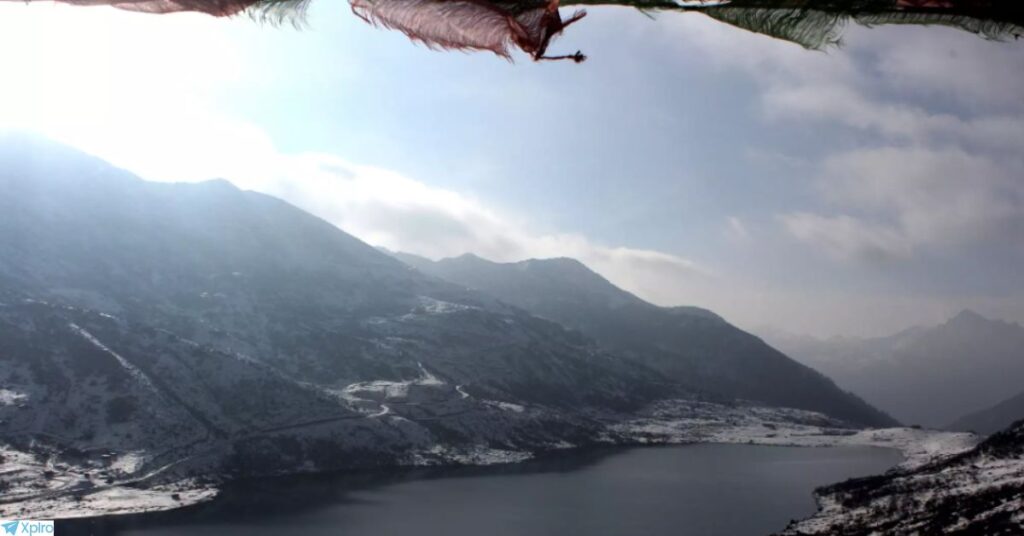
The Silk Route:
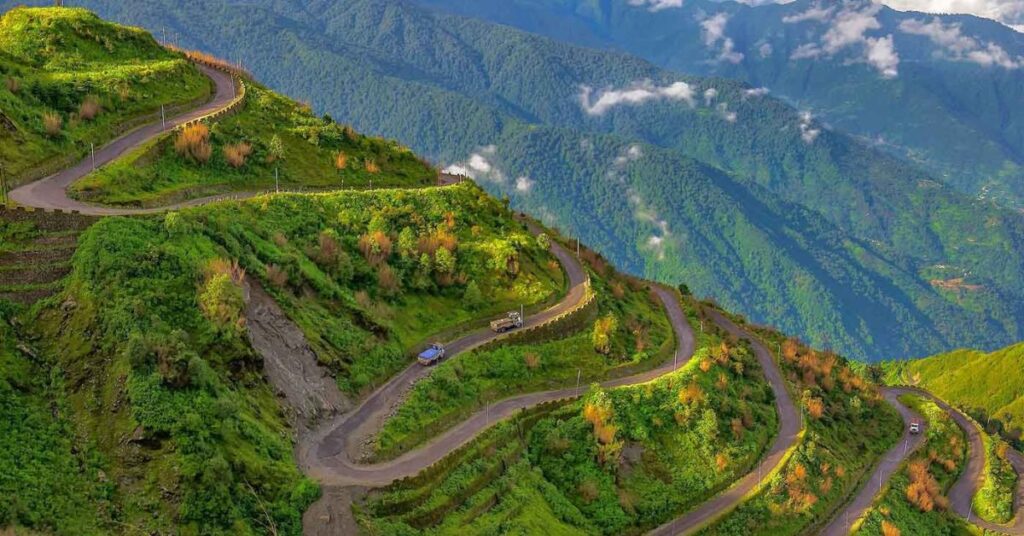
Nathula Pass isn’t just a scenic overlook; it’s a portal to a bygone era. This mountain pass was once a bustling artery of the Silk Route, a network of ancient trade routes that thrummed with life. Imagine caravans laden with silk, spices, and exotic treasures winding their way through these very mountains, connecting India and Tibet, and beyond.
Walking these paths today, you can almost hear the echoes of the past – the bustling chatter of traders, the jingle of bells on camels, the stories exchanged around campfires under a star-studded sky.
Local Experiences:
- Yak Rides at Tsomgo Lake: Experience Sikkim like never before with a traditional yak ride. Traverse the shores of the picturesque Tsomgo Lake, soaking in the stunning scenery and getting a taste of local culture.
- Shopping Spree: Browse the vibrant markets near Nathula Pass. Take home unique Sikkimese handicrafts, souvenirs, and warm woolen garments. Look out for prayer flags, Tibetan jewelry, and handcrafted woolen shawls – perfect keepsakes.
- Culinary Delights: Tantalize your taste buds with Sikkim’s rich cuisine. Sample momos (dumplings), thukpa (noodle soup), and churpi (hardened cheese) from local eateries and roadside stalls. It’s a delicious adventure for your palate!
- Photographer’s Paradise: Unleash your inner photographer! The region boasts breathtaking landscapes, vibrant flora, and serene lakes – countless picturesque spots for capturing unforgettable memories.
- Village Immersion: Venture into nearby villages to experience the warmth of Sikkimese hospitality. Interact with locals and gain a deeper understanding of their traditions and daily life.
- Birding Bonanza: Bird enthusiasts, rejoice! Nathula Pass is a haven for birdlife. Look out for the majestic Himalayan Monal, Blood Pheasant, and other exotic birds in their natural habitat.
- Nature’s Tapestry: Explore the region’s diverse flora and fauna. Embark on a nature walk to discover alpine flowers, unique medicinal plants, and maybe even spot a red panda or other fascinating wildlife.
- Immerse in Festivities: Plan your trip to coincide with a local festival and be enthralled by vibrant celebrations. Witness traditional dances, music, and rituals. Losar (Tibetan New Year) and Saga Dawa are particularly noteworthy cultural events.
- Military History Buffs: Delve into the region’s strategic significance. Visit the military museums near Nathula Pass and learn about the Indian Army’s presence in the area.
Travel tips:
- Secure Your Pass: Arrange a special permit beforehand through a registered travel agency in Gangtok. Carry valid ID proof and passport-sized photographs for a smooth process.
- Acclimatize Wisely: Spend a few days in Gangtok (lower altitude) before heading to Nathula Pass. This allows your body to adjust to the high altitude and helps prevent altitude sickness.
- Dress in Layers: Nathula Pass can be chilly year-round. Pack warm clothes and dress in layers for easy temperature adjustment.
- Weather Watch: Check the weather forecast before your trip. Even in summer, unpredictable mountain weather necessitates preparation.
- Seasonal Considerations: The ideal window for visiting Nathula Pass is May-June and October-November. Avoid the monsoon season (July-September) due to landslides and roadblocks. Winter (December-April) can be harsh with road closures, so check accessibility beforehand.
- Reliable Rides: Choose a reliable taxi or opt for a guided tour from Gangtok. Ensure the vehicle is well-maintained for a safe journey on mountain roads.
- Health First: Carry necessary medications, especially for altitude sickness. Consult your doctor beforehand if you have respiratory or heart conditions.
- Photography Pointers: Be mindful of photography restrictions. Respect no-photography zones, particularly near military installations.
- Staying Connected: Mobile connectivity can be limited in Nathula Pass. Carry enough cash and inform family about your travel plans.
- Minimize Waste: Pack reusable water bottles and avoid littering. Dispose of waste responsibly to maintain the pristine beauty of the region.
- Pack Smart: Travel light with essentials like warm clothes, snacks, water, personal ID, and required medications for a comfortable and hassle-free experience.
Conclusion
In Sikkim’s majestic embrace lies Nathula Pass, a jewel offering breathtaking vistas, historical intrigue, and rich cultural tapestry. Tower at 14,140 feet, witnessing the Indo-China border, or find serenity by the Tsomgo Lake. Seek solace at the Baba Harbhajan Singh Temple. Xplro.com ensures a smooth journey: acclimatize in Gangtok, secure permits, pack for diverse weather, choose the best season (May-June/Oct-Nov), arrange reliable transport, and pack smart. Explore villages, witness festivals, go on nature walks, or conquer challenging treks. With Xplro.com, Nathula Pass awaits, promising an unforgettable adventure.
FAQs
Do I need a permit to visit Nathula Pass?
- Yes, both Indian nationals and foreign tourists require a special permit to visit Nathula Pass. Indian nationals can obtain the permit through registered travel agencies in Gangtok.
Can foreign nationals visit Nathula Pass?
- No, foreign nationals are not permitted to visit Nathula Pass due to its proximity to the Indo-China border. However, they can visit nearby attractions like Tsomgo Lake and Baba Mandir.
What is the best time to visit Nathula Pass?
- The best times to visit are from May to June and from October to November when the weather is most favorable and the pass is usually accessible. Avoid the monsoon season (July to September) due to heavy rainfall and winter (December to April) when the pass may be closed due to snow.
How high is Nathula Pass?
- Nathula Pass is located at an altitude of 14,140 feet (4,310 meters) above sea level.
How do I get to Nathula Pass from Gangtok?
- You can hire a taxi or join a guided tour from Gangtok to reach Nathula Pass. The journey takes approximately 2-3 hours depending on road conditions.
What should I wear when visiting Nathula Pass?
- Dress in layers with warm clothing, even during summer months, as temperatures can be cold due to the high altitude. Carry thermal wear, gloves, hats, and scarves.
Are there any health risks at Nathula Pass?
- Due to the high altitude, visitors may experience symptoms of altitude sickness. It’s recommended to acclimatize in Gangtok for a couple of days before visiting and carry necessary medications.
Can I take photographs at Nathula Pass?
- Photography is restricted in certain areas, especially near military installations. Follow instructions from your guide and respect no-photography zones.
Are there accommodation options at Nathula Pass?
- There are no accommodation options at Nathula Pass itself. Most visitors stay in Gangtok and make a day trip to the pass.
What are the attractions near Nathula Pass?
- Nearby attractions include Tsomgo Lake, Baba Harbhajan Singh Temple (Baba Mandir), and the Indo-China border where you can witness the ceremonial opening of gates.
Is there mobile connectivity at Nathula Pass?
- Mobile connectivity can be limited or non-existent at Nathula Pass and its surroundings. Inform family and friends of your travel plans beforehand.
What should I carry with me to Nathula Pass?
- Carry essentials such as warm clothing, snacks, water, personal ID, required medications (especially for altitude sickness), and sufficient cash as there may not be ATMs available.




